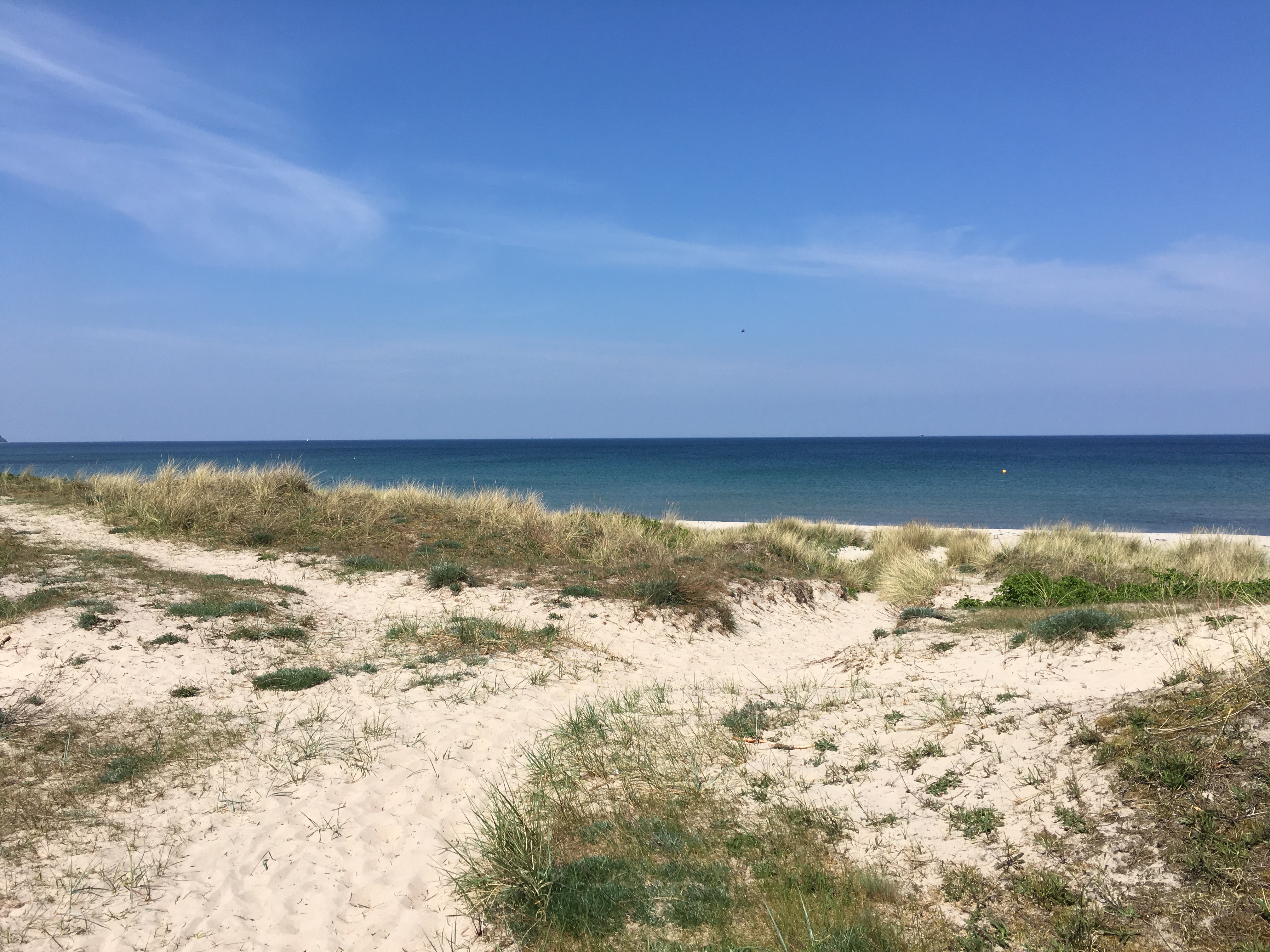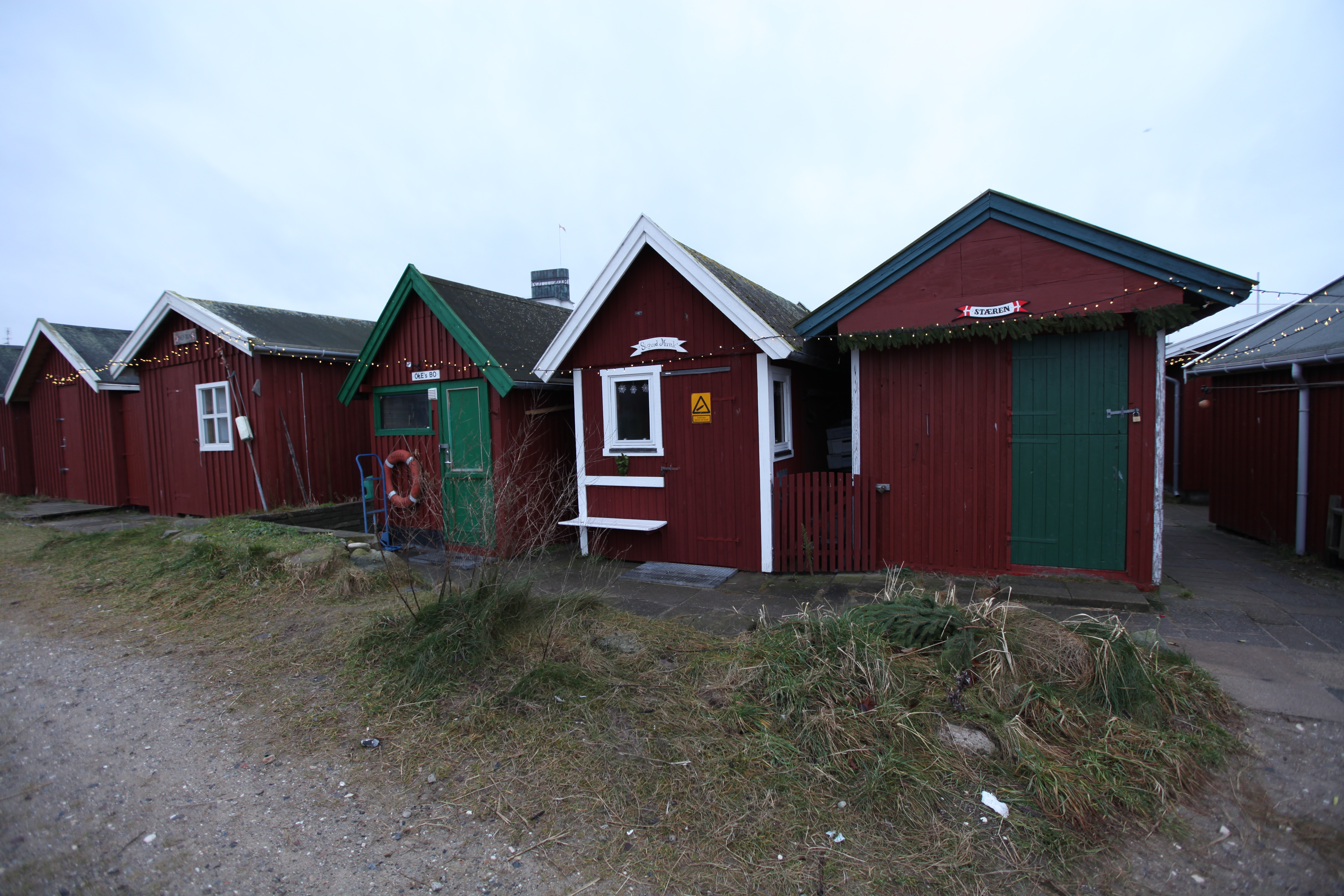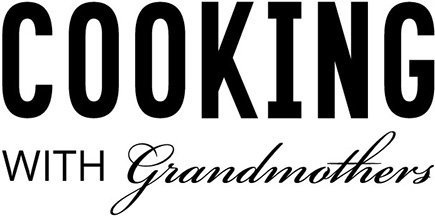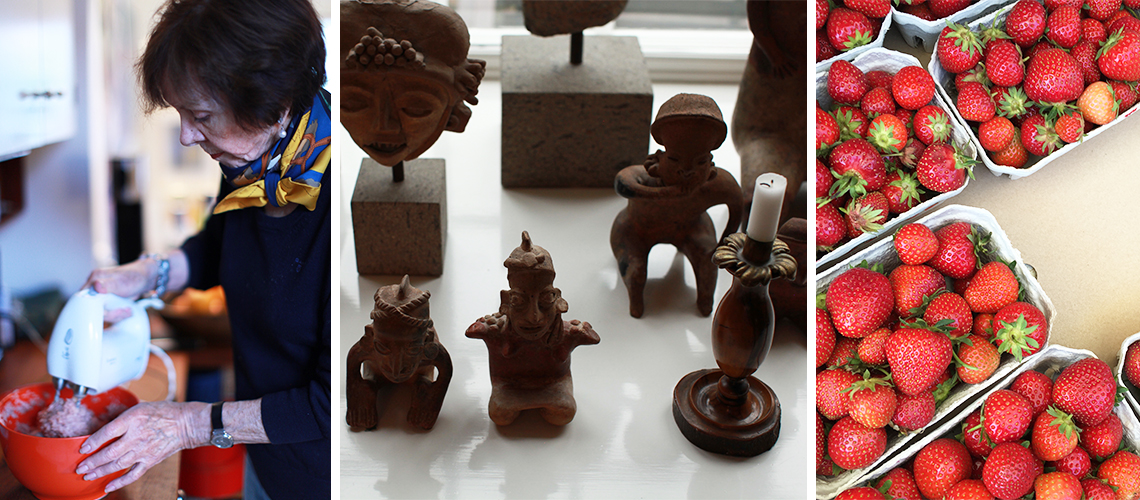Anne is an adventuress whose life has been marked by the unusual right from the start. Born, surprisingly, to a 48-year-old mother on the island of Jutland, in Denmark, Anne is now in her eighties and has spent much of her life exploring the world alone, in search of arts and crafts, new experiences, and foreign cookbooks.
I met her through friends of friends in Denmark. Much of my family lives in Copenhagen, and when I visited for a few months in 2015, word spread quickly around the neighborhood that I was looking for older women to cook with. Everyone said Anne was where I should start. While Denmark is all a flurry with New Nordic cuisine, and the strapping young men making it, I was in search of what everyday Danes, in particular the older ones, cook at home. Everyone was convinced that Anne could show me the best versions of the most typical dishes.
Classically trained at the Le Cordon Bleu in Paris, for Anne cooking is just one of the many territories she has explored in life. She brought to it the same spirit of curiosity with which she took her annual pilgrimages to America and Mexico in the 60s and 70s. In those trips it was first to England, then a boat to New York, then trains across America to “ride with the cowboys in Nevada, and hunt in California,” before making her way down to Mexico in search of crafts to sell in one of her three Copenhagen stores. “You could go anywhere alone back then and never feel unsafe. I’d just hire myself a car in Mexico, and drive around looking for beautiful crafts and stunning remote beaches to go swimming in.” Throughout her travels, Anne also collected cookbooks; from Tehran, Austria, Mexico, and other voyages which ultimately took her all the way around the world.

Summer in Denmark
As you might imagine, her travels have given Anne a good perspective on traditional Danish cooking within an international context. Evidently for the Danes it’s all about pork, potatoes, and cabbage. In the summer, berries, ærter (shelling peas), and fjordrejer (tiny pink fjord shrimp). Definitely dill and chives. Some apples in the autumn. And, an occasional cameo throughout the year of cinnamon or nutmeg; flavors that were introduced into the cuisine during the 17-19th centuries, when spices were shipped back from colonial trading posts in Southeast Asia. “But now people are starting to cook so differently. We import all sorts of ingredients. You can get everything. There’s Thai food, and Italian food, and curries are everywhere!
According to Anne, Danish people particularly “love sauce. Not very healthy sauce. Brown sauce. Especially with their pork. Oh, Jessica, there is just lots and lots of pork here, made simply. Frikadeller (Danish meatballs) and Flæskesteg (pork roast with crunchy crackling on top) are the two most loved.” Anne and I decided to make the frikadeller together; given that Danish children learn to cook the pork and onion meatballs in elementary school, it seemed an appropriate place for my lesson in Danish cookery to begin. Anne double grinds the meat for her frikadeller, and then whips the ingredients together with a handheld electric mixer, the result of which is an exceptionally fluffy, moist meatball. We cooked together in September, when summer and autumn ingredients were bridging, and so accompanied the frikadeller by a traditional side dish of pointed green cabbage in bechamel, followed by rødgrød med flode, the quintessential summer dessert of cooked red berries with cream. Classic, national dishes, all simple, but perfectly made.

Fishing Huts by the Harbor
To this day, Anne runs a small antique jewelry shop in the center of Copenhagen, where she can still be found most weeks. Being a gemologist is just another iteration of her long and colorful career in the arts and retail; designing bags and jewelry (for the renowned designer Georg Jensen), producing Danish children’s wear, selling Americans handmade Danish sweaters they went “crazy over in the 70s,” and introducing previously unseen Mexican crafts to Denmark. A free spirit through and through, Anne waited until she was in her 60s to settle down, when she chose to marry an old friend, who was recently widowed and shared her love of art and collecting. Together they make frequent trips to the harbor each week for fresh fish, which Anne turns into simple evening suppers, typically enjoyed with crisp white wine reminiscent of those she drank during her travels. If it weren’t for her devotion to her husband, I have no doubt that Anne would still be journeying around, exploring the world and tasting foreign foods. Her parting advice to me: “Marry a younger man.”







SHARE YOUR THOUGHTS